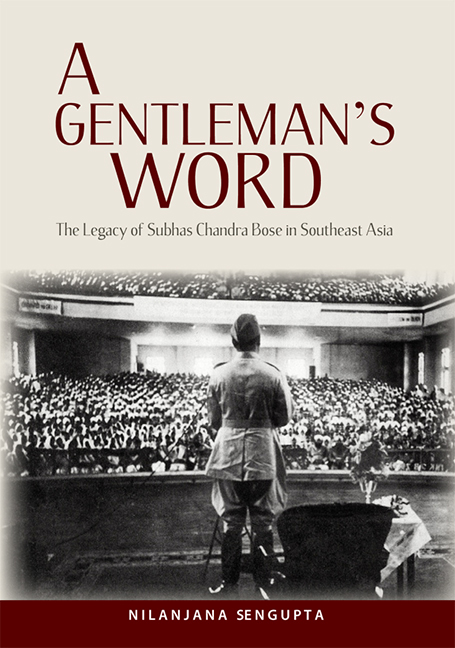Book contents
- Frontmatter
- Dedication
- Contents
- Foreword by S. R. Nathan
- Message by K. Kesavapany
- Message by Joyce C. Lebra
- Preface
- Acknowledgements
- 1 A Journey: A Dream
- 2 An Outsider in the Crescent and a Trial for Treason
- 3 End of a War, Beginning of Others
- 4 We are the Multitudes
- 5 “They Have Done Enough at Home”: Escape from the Shadows
- Bibliography
- Index
- About the Author
- Plate Section
Message by K. Kesavapany
Published online by Cambridge University Press: 21 October 2015
- Frontmatter
- Dedication
- Contents
- Foreword by S. R. Nathan
- Message by K. Kesavapany
- Message by Joyce C. Lebra
- Preface
- Acknowledgements
- 1 A Journey: A Dream
- 2 An Outsider in the Crescent and a Trial for Treason
- 3 End of a War, Beginning of Others
- 4 We are the Multitudes
- 5 “They Have Done Enough at Home”: Escape from the Shadows
- Bibliography
- Index
- About the Author
- Plate Section
Summary
Most Indian families of my generation in Singapore and Malaysia would have had some connection with Subhas Chandra Bose and his struggle for India's independence through the Indian National Army. Even after World War II had ended, and for many years later, Bose's picture took pride of place in our homes.
Following my assumption of duty as Director of the Institute of Southeast Asian Studies in 2002, I had several conversations with then-President S.R. Nathan. He noted that, while there were many accounts of Bose's life and wartime exploits, his legacy had not been explored sufficiently and written about. Mr Nathan hoped that this would be done.
It was against this background that I decided to commission a book on Bose which would highlight his contributions to the emergence of nationalist movements in Southeast Asia. I also wanted the book to show how Bose had affected the lives of ordinary men and women living in Malaya.
About ten months ago, I came to know Nilanjana Sengupta. I discussed the idea of her writing the book. Coming from Calcutta, Bose's home town, she had a first-hand feel for the subject in the larger Indian context. What she needed was knowledge of developments in and around Southeast Asia. Reading voraciously, she came up to speed on the subject and completed writing the book in a record ten months. Although this book is very well researched, it is written engagingly for both the scholar and the layman. It brings to life an epic period of Singapore and Malayan history through the iconic figure of Bose and the legacy that he so richly left behind.
I would like to express my appreciation to Nilanjana for working so assiduously on a legendary personality who remains enshrined in the hearts and minds of many. I would also like to thank Rinkoo Bhowmik, another daughter of Calcutta, and the staff of ISEAS Publications Unit for all the hard work they have put into the production of this book.
- Type
- Chapter
- Information
- A Gentleman's WordThe Legacy of Subhas Chandra Bose in Southeast Asia, pp. xi - xiiPublisher: ISEAS–Yusof Ishak InstitutePrint publication year: 2012

